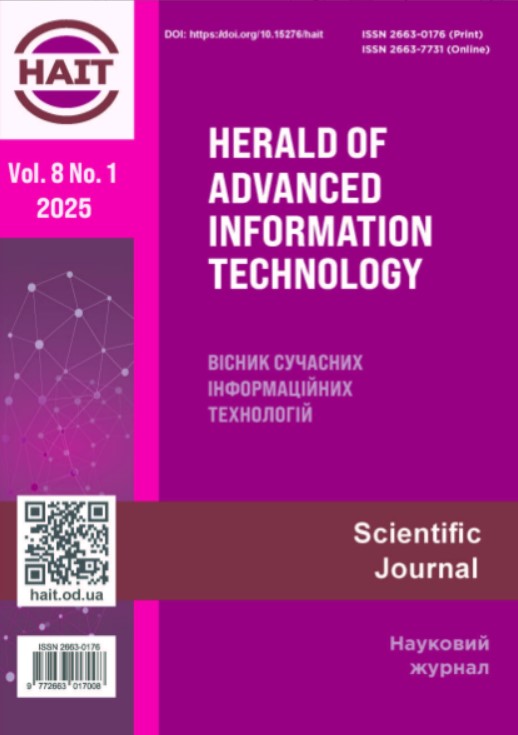Метод відстеження місцеперебування пацієнта у системах віртуального супроводу в медичних закладах
Main Article Content
Анотація
В статті запропоновано гібридний метод відстеження місцеперебування пацієнта у системах віртуального супроводу в медичних закладах. Для забезпечення необхідної точності внутрішнього позиціонування та безперешкодної навігації, що особливо важливо для осіб із обмеженою мобільністю, запропоновано гібридний метод, який поєднує сканування кодів швидкого доступу, використання маячків Bluetooth Low Energy та технологію позиціонування за допомогою Wi-Fi. Кожна з цих технологій відіграє унікальну роль у загальній системі: коди швидкого доступу слугують дискретними маркерами місцеположення, маячки Bluetooth Low Energy забезпечують безперервне відстеження на основі відстані, а позиціонування з Wi-Fi покращує покриття у відкритому просторі. Ключовим аспектом дослідження є інтеграція в запропонований гібридний метод позиціонування технологій доповненої реальності. Накладання навігаційних підказок у реальному часі на поле зору користувача за допомогою пристроїв із підтримкою доповненої реальності, таких як смартфони, дозволяє зробити систему віртуального супроводу більш інтуїтивною та інтерактивною. Ця особливість є цінною для осіб з інвалідністю, оскільки знижує когнітивне навантаження та підвищує просторову обізнаність у складних медичних середовищах. У дослідженні запропоновано структурну схему системи віртуального супроводу на основі доповненої реальності, що включає модуль сканування кодів швидкого доступу, модуль маячків Bluetooth Low Energy, модуль Wi-Fi позицінуваня, модуль пошуку оптимального маршруту, модуль доповненої реальності та модуль інтеграції. Інтеграція визначених модулів дозволяє використати переваги кожного з них та зменшити їх недоліки. Розроблено модель взаємодії компонентів системи, де визначено зовнішні та внутрішні інформаційні потоки та інтеграційну взаємодію визначених структурних елементів системи. Визначено перспективні напрямки майбутніх дослідженнь, зокрема методи, алгоритми та технології інтеграції передових функцій доповненої реальності, персоналізація маршрутів на основі алгоритмів штучного інтелекту та підвищення енергоефективності системи.



